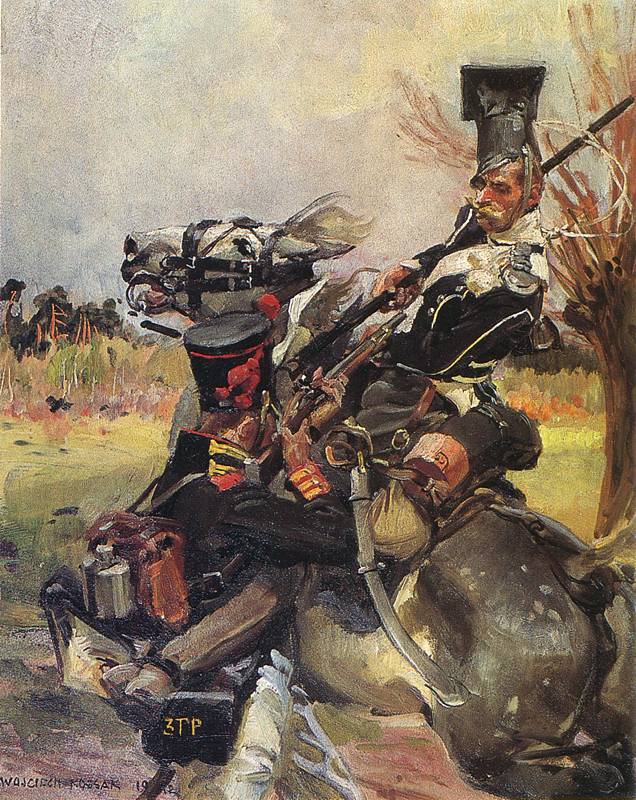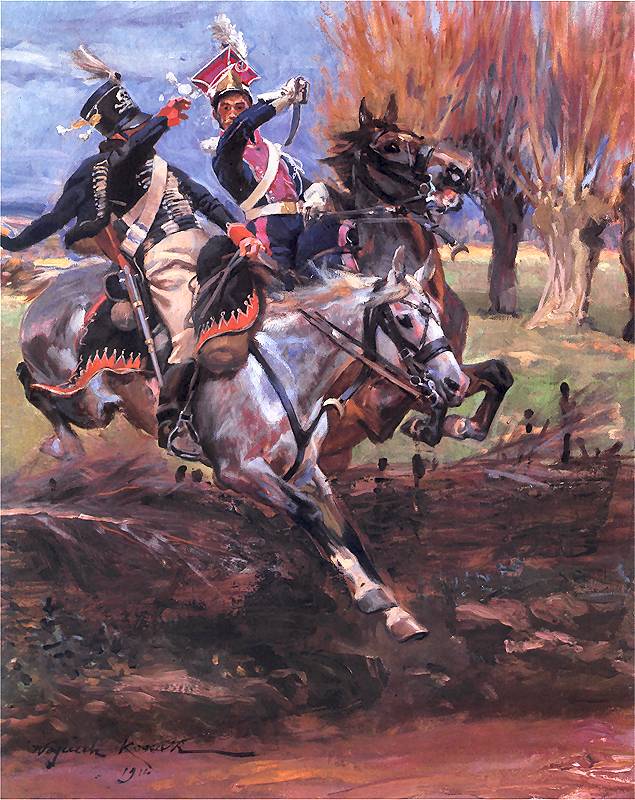It was the famous cry of despair of French Marshal Soult to a Polish colonel Konopka (the commander of the 3rd Lighthorse Lancer Regiment). Konopka did listen…
What happened next? Destruction of an English infantry square and five British standards were taken. Such disaster for Brits happened only ones during the Napoleonic Wars...
Next the Vistula Ulans were known very well. They got names (given by their enemies): “Los Picadores del infierno" or "Los Diablos Polacos".


(…) Poles advanced against the British Inf. Brigade commanded by Lieutenant Colonel John Colborne. The Poles charged in full view of "The Buffs" who were on a hill.
The Poles sped up uphill with their lance-pennons swinging in the air. As they were advancing, they lowered their lances and..... a thunderous volley greeted them. But it didn't stop the uhlans; they hit the "Buffs" , the II/48th "The Northamptonshire" Infantry Regiment, and the II/66th Infantry Regiment. Their lances pierced the belts and the red coats of the Brits. The infantrymen clapped their hands to their saber-cut faces, blood oozing. In the heat of the fight those of the Brits who signaled to surrender were killed and no mercy was shown in the beginning. The II/31st Infantry Regiment (418 men) also found themselves under assault. Numerous and scattered groups of Redcoats either surrendered (several hundred), ran for safety, or fought to their death. The confusion was riotous - whinnying horses, screaming Poles and Brits, raised lances, cracking muskets. The battlefield was a cacophony of violent sounds. Five British standards were taken (…)
(…) Polish Lancers, armed with a fearsome weapon hardly ever seen by the British and a superb killing instrument that enabled the bearer to kill with little fear to himself. It was also a weapon from which there was little escape, it being just as easy to thrust down and kill someone on the ground as it was to kill a man standing. The Polish Lancers dealt death all around them, violently and quickly, and when they withdrew just a few minutes later 1,300 out of Colborne's 1,600 men had been either killed or wounded in the carnage. (…)


--
http://web2.iadfw.net/napoleon/albuhera.html
http://british-cemetery.planetaclix.pt/descrpo.htm
http://www.military-art.com/dhm025.htm
http://www.napoleon-series.org/military ... flags.html
http://web2.airmail.net/napoleon/albuhera.html
http://www.firstfusiliers.org.uk/History%20Three.htm
http://www.wargames.co.uk/Library/Obats ... raBat.html
http://www.kingsgermanlegion.org.uk/album_albuhera.htm
http://web2.iadfw.net/napoleon/duchy-lancers.html
http://wlonab.fm.interia.pl/espana/albuhera.html
http://web2.iadfw.net/napoleon/duchy-guard.html
--
http://www.wargames.co.uk/Library/Obats ... lbuera.JPG
--
The Battle of Albuera, from History of the War in the Peninsular by W.E.P. Napier
(Pub. Original 1835, Constable 1992)
--
* * *

